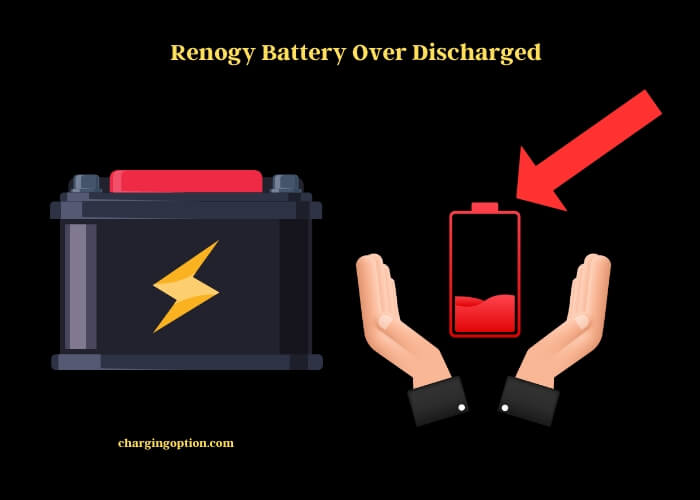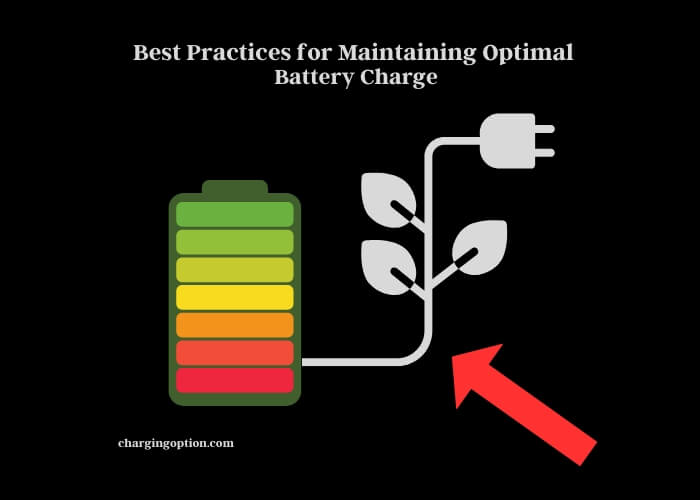Renogy batteries, especially when over-discharged, can pose challenges for users. Over-discharging typically means the battery voltage drops below the safe operational limit, which can hinder the performance and longevity of the battery.
Renogy’s products, like many other lithium batteries, are susceptible to over-discharge, leading to potential issues like reduced battery life or the battery’s inability to hold a charge. This is a common problem faced by many lithium battery users. If not addressed, over-discharge can permanently damage the battery.

One common question that arises is how to fix an over-discharged battery. The key is to act promptly. Initiating a controlled charge using a compatible charger can sometimes rejuvenate the battery. Especially with Renogy batteries, monitoring and maintaining proper voltage levels is crucial. If your battery gives an undervoltage warning, it’s an indication that the battery has been deeply discharged and requires immediate attention.
For those using Renogy’s solar systems, the charge controller plays a vital role in battery management. If faced with charging or battery issues, one may need to reset the Renogy charge controller. Models like the Renogy Rover come with reset functions to aid users in troubleshooting.
In essence, over-discharging a battery can have detrimental effects. Yet, with proper care, knowledge, and the right tools, it’s possible to mitigate these issues. For a more in-depth guide on this topic, you’re invited to read the detailed article below.
Understanding Over-Discharge: What it Means and Why it Happens
Have you ever wondered what over-discharge really means for batteries? Simply put, it’s when a battery’s voltage dips below its safe operating limit. Think of it as a car running on fumes – not good, right? So, what causes this in batteries? Several culprits include frequent deep discharges, age, and inappropriate charging techniques. It’s like constantly pushing your body to its limits without proper rest and nutrition.
Renogy Batteries and Their Unique Characteristics
If batteries were a group of students, Renogy would be that overachiever we all know! Renogy batteries boast durability and efficiency but, just like other students, they’re not immune to challenges. While similar in some ways to other lithium-ion batteries, they have their distinct features. Why does this matter? Knowing the specifics helps in tailoring care for the battery.
Recognizing the Signs: Renogy Battery Undervoltage Warning
Imagine you’re on a road trip and your fuel light starts blinking. That’s an undervoltage warning for you! In battery terms, it’s a signal that your Renogy battery’s power level is dangerously low. Ignoring this is like hoping your car will run indefinitely on empty – wishful thinking at best. This warning is the battery’s SOS, highlighting the need for urgent action.
The Implications of Lithium Battery Over-Discharge
Driving a car without oil or running a marathon with a twisted ankle – these analogies paint a picture of lithium batteries facing over-discharge. It’s risky! Besides reducing the battery’s lifespan, it can cause it to fail altogether. And while all lithium-ion batteries are susceptible, Renogy, with its unique architecture, may react a tad differently. So, knowing the specifics of over-discharge is crucial!
Immediate Measures: How to Fix Over-Discharged Battery
Alright, so you’ve over-discharged your battery, now what? Don’t panic! Sometimes, using a controlled charge can bring your battery back from the brink. It’s like giving a dehydrated person small sips of water. Starting with a gentle, controlled charge can revive the battery and give it a new lease on life. But remember, the sooner you act, the better!
Role of the Charge Controller in Preventing Over-Discharge
Think of the charge controller as the brain of the charging process. Its job? Ensuring the battery isn’t overcharged or over-discharged. It’s like having a personal trainer ensuring you neither overexert nor slack off. Setting the correct parameters can prevent unexpected battery downtimes and keep it in prime condition.
Step-by-Step: How to Reset and Troubleshoot Your Renogy Charge Controller
Embarking on a DIY troubleshooting mission? Fear not! We’re here to guide you through the process of inspecting and potentially resetting your Renogy Charge Controller. This hands-on guide aims to help you assess any hiccups with the controller, or possibly highlight some issues within your system’s configuration.
Gather Your Tools
- Multimeter
- Solar Panel specification sheet
- Your trusty Charge Controller Manual
Begin with the Basics
Checking the Connections: First and foremost, make sure all connections to the controller are firm and snug. Kick things off by connecting the controller to your battery bank, followed by the solar array. Ensure the terminal screws on the controller are tightened just right. Once you’re confident about the connections, peek at the controller’s display or LED indicators. If they look off, cross-check with the behaviors described in your manual. You might just spot the root of the problem!
Spotting Fault Indicators: Seeing no signs of trouble on the display? Great! Let’s move onto some core troubleshooting.
Verifying the Battery Connection: Here, your multimeter plays the hero. Check for voltage readings at both the Battery Bank terminals and the Charge Controller’s Battery terminals. To do this:
- Set the multimeter to a DC voltage range above 20V.
- Place the positive (+) lead on the battery bank’s positive terminal and the negative (-) lead on its negative counterpart.
- Note the displayed reading.
- Now, do the same for the controller’s battery terminals.
- Ideally, if your wiring is on point, the voltage from both readings should be neck and neck, with only a minor millivolt difference. If that’s not the case, it might be time to chat with a technician.
Assessing the PV Connection: Still with your multimeter, this time set it for a DC voltage range exceeding 150V. Your target is to check the voltage at the PV terminals on the Controller. Here’s how:
- Position the positive (+) lead on the PV terminal and the negative (-) lead on its opposite counterpart on the Controller.
- The reading should ideally align with your solar array’s VMP. Not sure about that number? Check your solar panel’s spec sheet. If your readings deviate by more than 10% of the VMP, it could hint at an issue with the solar panel’s connection.
- Notice a negative (-) sign on your multimeter? It could be a reverse polarity issue; switching the leads might do the trick. But if discrepancies persist, your Charge Controller might need a technician’s touch.
By the end of this process, you should have a clearer picture of where the trouble lies. And remember, it’s always okay to reach out to experts when in doubt. The Renogy Support Team is just a call away. Wishing you a smooth and sunny energy journey!
Testing the Solar Array’s Output: Even if your controller seems okay, sometimes the issue might be with the solar panels themselves.
- Using your multimeter, set it to measure DC voltage that matches the expected output of your solar array.
- Connect the positive (+) lead to the positive terminal of the solar panel and the negative (-) to the other.
- The reading you get should be in sync with what’s on your solar panel spec sheet, under the VMP or voltage maximum power. Any huge disparities might be a clue that your panels are the culprits, or there might be issues with the connections between the panels and the controller.
Factory Reset: Sometimes, tech just needs a good old reset to function as new. Refer to your Charge Controller manual to find the exact steps for a factory reset. This can clear any minor software glitches that might be affecting the performance.
Physical Inspection: Give your controller a once-over. Check for any visible signs of damage, overheating, or wear and tear. Sometimes, physical issues can lead to functional problems. If you notice anything unusual, consider reaching out for professional advice.
Firmware Update: Just like your smartphone, your charge controller might need periodic software updates. Refer to the Renogy website or your product manual to see if there are any firmware updates available for your specific model.
In a world of gadgets and tech, it’s pretty handy to have some troubleshooting skills up your sleeve. But always remember, while DIY is fun and empowering, there’s no harm in leaning on professionals for a second opinion or assistance. The Renogy Support Team is ever-ready to assist, ensuring your solar journey remains bright and hassle-free. Keep shining and harnessing the sun’s power to the fullest!
Best Practices for Maintaining Optimal Battery Charge
Would you leave a cake in the oven without a timer? Probably not! Similarly, don’t neglect your battery. Keep tabs on its charge levels. With the right practices, you can avoid the perils of over-discharge. Being proactive, like checking regularly and maintaining optimal charging conditions, ensures your battery stays healthy and lasts longer.

So, there you have it. Navigating the world of Renogy batteries and over-discharge can be a breeze if you’re armed with the right information. Stay informed, stay charged!
Summary
Navigating the nuances of batteries might seem a bit like finding your way through a maze in the dark, but with a little light and guidance, the path becomes clear. Over-discharging a Renogy battery isn’t the end of the world, but it does sound an alarm for immediate attention. Whether it’s heeding the warning signs or resetting the charge controller, it’s all about reacting promptly and effectively.
Look at it this way: just as you wouldn’t ignore signs of fatigue in your own body, you shouldn’t neglect the signals your battery sends out. Addressing the issue head-on, understanding the specifics of your Renogy battery, and implementing best practices are your roadmap to ensuring a long and efficient battery life.
Remember, batteries, like most things in life, thrive on a little TLC. So, the next time your Renogy battery gives out a sign, you’ll know just what to do. Because with knowledge comes empowerment, and empowered users make for happy batteries!
References
Now, equipped with all this knowledge, are you ready to give your Renogy battery the care it deserves? Remember, it’s not just about fixing issues but also about prevention and maintenance. Stay charged and keep shining!
Read More:
